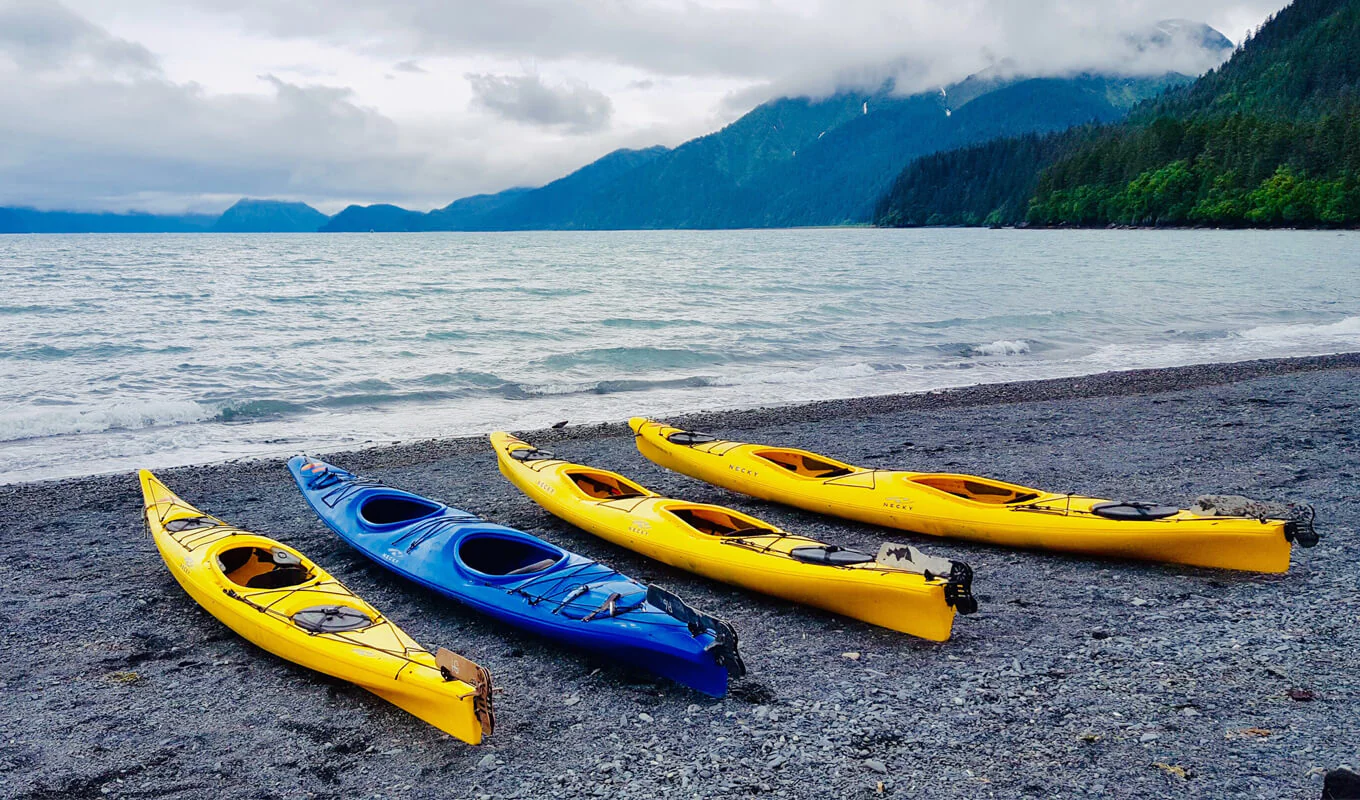Choosing the Right Kayak: A Guide to Finding Your Perfect Vessel

Welcome to our comprehensive guide on selecting the perfect kayak for your adventures on the water. Whether you’re a novice paddler or an experienced kayaker looking to upgrade, choosing the right kayak is crucial for a safe and enjoyable experience. In this guide, we’ll walk you through everything you need to know to make an informed decision, from identifying your kayaking goals to evaluating different types of kayaks and key features to consider.
Understanding Your Kayaking Goals
Identifying Your Kayaking Style
When choosing a kayak, it’s essential to consider the type of kayaking you’ll be doing. Are you interested in leisurely paddling on calm lakes and rivers, or are you drawn to the thrill of whitewater rapids? Perhaps you’re more interested in exploring the open ocean or fishing in secluded coves. Identifying your kayaking style will help narrow down your options and ensure you choose a kayak that meets your specific needs and preferences.
Assessing Skill Level
Your kayaking experience and skill level will also play a significant role in determining the type of kayak that’s right for you. Beginners may prefer stable and forgiving kayaks that are easy to maneuver, while more experienced paddlers may be comfortable with narrower, faster boats that require greater skill to handle. Be honest with yourself about your abilities and choose a kayak that matches your skill level to ensure a safe and enjoyable paddling experience.
Types of Kayaks
Recreational Kayaks
Recreational kayaks are a popular choice for beginners and casual paddlers. These kayaks are typically stable, easy to maneuver, and comfortable, making them well-suited for leisurely paddling on calm waters such as lakes, ponds, and slow-moving rivers. Recreational kayaks often feature a wide cockpit for easy entry and exit, ample storage space for gear, and a flat hull for stability.
Touring Kayaks
Touring kayaks, also known as sea kayaks, are designed for long-distance paddling and exploration. These kayaks are sleeker and more efficient than recreational kayaks, with a longer waterline for improved tracking and speed. Touring kayaks often feature a narrow cockpit for a snug fit, a V-shaped hull for better performance in choppy waters, and ample storage space for multi-day trips. They’re ideal for paddlers looking to venture out into open water and explore coastal environments.
Fishing Kayaks
Fishing kayaks are specially designed for anglers who want to fish from a kayak. These kayaks typically feature fishing-specific accessories such as rod holders, tackle storage, and fish finders. They’re stable and maneuverable, allowing anglers to navigate shallow waters and tight spaces with ease. Fishing kayaks come in various styles, including sit-on-top and sit-inside models, and are suitable for both freshwater and saltwater fishing.
Whitewater Kayaks
Whitewater kayaks are designed for navigating fast-moving rivers and rapids. These kayaks are typically short and maneuverable, with a planing hull and rocker profile that allows them to surf waves and punch through whitewater. Whitewater kayaks come in different sizes and styles, including playboats for freestyle tricks, river runners for navigating technical rapids, and creek boats for steep and rocky rivers. They’re built to withstand the rigors of whitewater paddling and provide the agility and control needed to tackle challenging river conditions.
Sea Kayaks
Sea kayaks, also known as touring kayaks, are designed for paddling in coastal waters and open ocean environments. These kayaks are longer and narrower than recreational kayaks, with a sleek hull and pointed bow for efficient paddling and tracking. Sea kayaks often feature bulkheads and hatches for storage, skegs or rudders for steering, and deck rigging for securing gear. They’re ideal for multi-day expeditions and exploring remote coastlines, offering stability, speed, and seaworthiness in a variety of conditions.
Key Features to Consider
Kayak Materials
When choosing a kayak, consider the material it’s made from, as this will affect its durability, weight, and performance on the water. Common kayak materials include:
Plastic (Polyethylene): Affordable and durable, plastic kayaks are a popular choice for recreational paddlers. They’re resistant to impact and abrasion, making them ideal for rocky rivers and shallow waters. However, they can be heavier than other materials and may fade or deform over time when exposed to sunlight.
Fiberglass: Fiberglass kayaks are lightweight and rigid, offering excellent performance and responsiveness on the water. They’re suitable for touring and sea kayaking, providing a smooth and efficient paddling experience. Fiberglass kayaks are more expensive than plastic kayaks but offer superior durability and performance.
Composite (Carbon/Kevlar): Composite kayaks are the lightest and strongest option, offering exceptional performance and durability. They’re often used by competitive paddlers and expedition kayakers who demand the best performance from their equipment. Composite kayaks are also the most expensive option but offer unmatched performance and longevity.
Kayak Size and Weight Capacity
It’s important to choose a kayak that’s the right size for your body and intended use. Consider factors such as your height, weight, and the amount of gear you’ll be carrying. A kayak that’s too small may feel cramped and unstable, while a kayak that’s too large may be difficult to maneuver. Pay attention to the kayak’s weight capacity and ensure it can accommodate your weight plus any gear you’ll be bringing along.
Stability and Maneuverability
Stability and maneuverability are key considerations when choosing a kayak. Recreational kayaks tend to be more stable, making them a good choice for beginners and casual paddlers. Touring kayaks prioritize efficiency and speed over stability, while whitewater kayaks prioritize maneuverability and agility. Consider your comfort level on the water and choose a kayak that strikes the right balance between stability and maneuverability for your skill level and paddling style.
Additional Considerations
Storage and Transport
Before purchasing a kayak, consider how you’ll store and transport it. If you have limited space at home, look for kayaks that are lightweight and easy to store, such as inflatable or folding kayaks. If you’ll be transporting your kayak on a vehicle, invest in roof racks or a kayak trailer to securely transport your kayak to and from the water. Consider the size and weight of the kayak when choosing a storage and transport solution, and make sure it’s compatible with your vehicle and lifestyle.
Cost and Budget
Kayaks come in a wide range of prices, from budget-friendly options to high-end models with advanced features. Consider your budget and how much you’re willing to invest in a kayak. Keep in mind that higher-priced kayaks often offer better performance, durability, and features, but there are plenty of affordable options available for recreational paddlers. Consider your long-term kayaking goals and choose a kayak that offers the best value for your budget.
Accessories and Gear
In addition to the kayak itself, you’ll also need to invest in accessories and gear to enhance your paddling experience. Essential kayak accessories include paddles, life jackets, and safety gear such as a bilge pump and whistle. Depending on your kayaking activities, you may also want to invest in additional gear such as a spray skirt, dry bags, and navigation tools. Consider your specific needs and preferences when choosing accessories and gear, and prioritize safety and comfort on the water.
Research and Testing
Reviews and Recommendations
Before making a decision, it’s essential to research different kayak models and read reviews from reputable sources. Websites, forums, and social media groups dedicated to kayaking can provide valuable insights and recommendations from experienced paddlers. Pay attention to factors such as durability, performance, and customer satisfaction when reading reviews, and look for kayaks that consistently receive positive feedback from users.
Test Paddling
One of the best ways to determine if a kayak is right for you is to test paddle it before making a purchase. Many kayak retailers and outfitters offer demo days or rental programs where you can try out different kayak models on the water. Take advantage of these opportunities to test paddle a variety of kayaks and evaluate factors such as comfort, stability, and performance. Pay attention to how the kayak handles in different conditions and consider how it feels to paddle for an extended period.
Conclusion
Choosing the right kayak is a crucial decision that can significantly impact your paddling experience. By understanding your kayaking goals, assessing your skill level, and considering factors such as kayak type, size, and features, you can find the perfect vessel to suit your needs and preferences. Remember to research different kayak models, read reviews, and test paddle kayaks before making a final decision. Whether you’re exploring calm lakes, navigating whitewater rapids, or fishing in secluded coves, a well-chosen kayak will enhance your enjoyment and adventure on the water. So, take your time, weigh your options, and embark on your kayaking journey with confidence in your chosen vessel.




